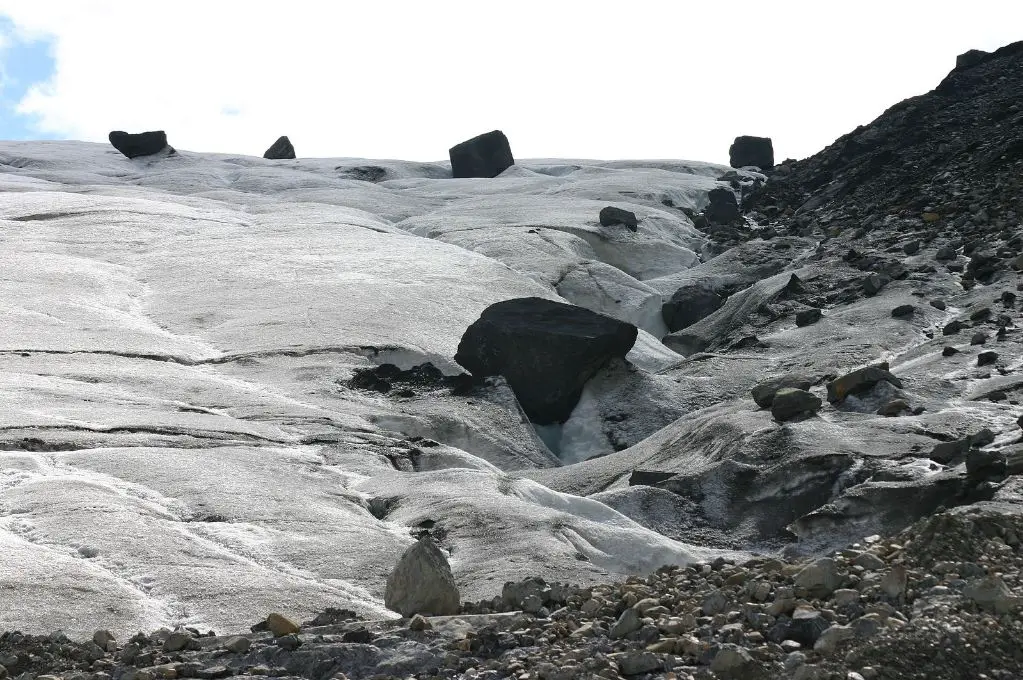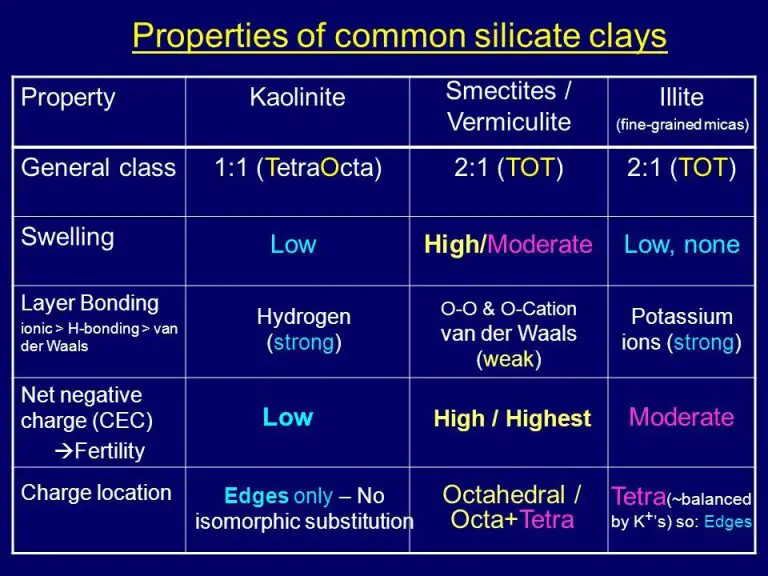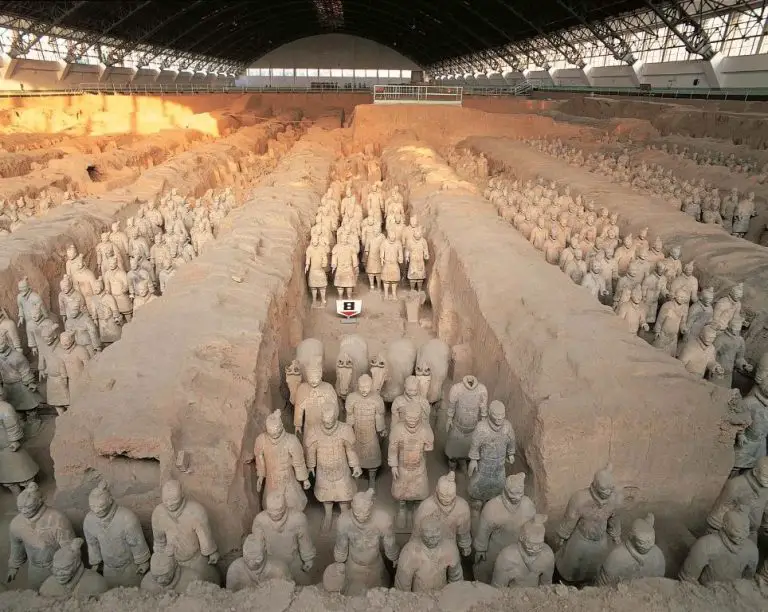Is Black Clay Natural?
What is Black Clay?
Black clay is a type of natural clay that has a dark black color. It is sometimes referred to as “barro negro” in Spanish, which translates to “black mud” or “black clay.” Black clay is primarily found in certain regions of Mexico, especially in the state of Oaxaca (source).
The dark color of black clay comes from its unique composition and production process. Naturally occurring black clay contains high amounts of iron oxide and manganese, which give it the dark pigmentation. However, the clay needs to be fired in a low-oxygen environment to fully develop the black color. This firing process causes chemical changes in the clay that turn it an intense black hue (source).
In addition to iron and manganese, black clay also contains substantial amounts of aluminum and silicate minerals. The mineral composition gives black clay high plasticity and strength when formed into pottery and other objects. The clay can be molded into delicate shapes without cracking or breaking when fired at high temperatures. This makes it ideal for producing detailed and durable handicrafts (source).
Overall, the main properties of black clay are its dark black color, high iron and manganese content, plasticity, and strength. When sourced ethically and processed properly, it produces beautiful black pottery and artworks with a distinctive matte finish and earthy quality.
Origins and Formation
Black clay forms naturally through the chemical weathering of rocks over long periods of time. The clay deposits accumulate in floodplains, lakes, coastal plains and continental shelves (USGS, 2009). This weathering process usually happens in wet, warm climates where abundant rainfall helps break down feldspar and other minerals in igneous rocks like granite. As the feldspar breaks down, it releases aluminum, silicon, and various metal ions that combine with water to form clays. Over time, these clays accumulate into deposits.

The weathering process starts when weakly acidic rainwater mixes with atmospheric carbon dioxide to produce a weak carbonic acid solution. This slowly dissolves the feldspar and other minerals in the rocks through hydrolysis reactions. The ions released react to form clays like kaolinite, montmorillonite-smectite, and illite, which give the clay deposits their blackish color (Texas State Soil, n.d.). Over thousands of years, these sediments accumulate into layered deposits of black clays in certain geological regions.
Uses and Benefits
Black clay has been used for centuries for its versatile benefits. Some of the main uses and benefits of black clay include:
Skincare and Cosmetics
Black clay is rich in minerals like calcium, magnesium, silicon, iron, and potassium, which provide nourishment to skin and hair. When used on the skin, black clay can help draw out impurities, toxins, and excess oils while providing hydration. This makes it useful for addressing issues like acne, oily skin, dry skin, and eczema. Black clay masks are popular for cleansing and detoxifying the skin [1].
In cosmetics, black clay is used in soaps, facial masks, shampoos, and hair masks to cleanse hair and scalp, add shine, and improve manageability.
Building Materials
Black clay can be used to make bricks, cement, and other building materials. Its high iron content gives it durability, strength, and weather resistance.
Art and Pottery
Artists and potters often use black clay for its dark color and plasticity. It can be used to make decorative pottery, sculptures, and mixed media artworks.
Chemical Composition
Black clay is composed primarily of the clay mineral kaolinite, along with other clay minerals like illite and smectite in smaller quantities (Liu, 2017). The main components of black clay are silica, alumina, and water, with some substitutions of iron and magnesium. According to Britannica, black clays can contain up to 85% kaolinite, 10% illite, and 5% smectite (Britannica, 2022).
In addition to the main clay mineral components, black clay contains trace elements like titanium, chromium, nickel, zinc, and manganese. A study analyzing black, red, and laterite clays in India found iron oxide concentrations ranging from 1.32% to 8.98%, along with trace amounts of titanium dioxide, nickel oxide, and manganese oxide (ResearchGate, 2018). The concentrations of trace elements can vary based on the geological origin and composition of the clay.
Overall, the mineralogy and chemical composition of black clay consists predominantly of kaolinite, with smaller amounts of other phyllosilicate clays, silica, iron oxides, and trace metals.
Liu, Z. (2017). Mineral composition of the Lower Cambrian black shale in South China: Implications for the base-level change. Gondwana Research, 47, 177–190. https://doi.org/10.1016/j.gr.2017.04.001
Clay mineral. (2022). In Encyclopædia Britannica. https://www.britannica.com/science/clay-mineral
Jayaganesh, K., & Muthusamy, M. (2018). Clay Mineralogy and Geochemistry of some Black, Red and Red Laterite Soils in Semi- Arid Tropical Region of Tamil Nadu. Journal of the Indian Society of Soil Science, 66(1), 48–56. https://www.researchgate.net/publication/323486240_Clay_Mineralogy_and_Geochemistry_of_some_Black_Red_and_Red_Laterite_Soils_in_Semi_Arid_Tropical_Region_of_Tamil_Nadu
Is it Safe?
When sourcing any natural clay, it’s important to consider potential contaminants and safety. Black clay’s dark color comes from relatively high levels of manganese and iron oxides. While manganese oxides help create black clay’s distinctive color, high levels can potentially be toxic if ingested. According to research by Digital Fire, manganese levels over 4% could be hazardous.
However, most commercially available black clay contains safe levels of manganese. Reputable clay suppliers test their clay for contaminants and share safety data sheets. It’s generally considered safe for ceramic use at high temperatures which helps drive off potentially problematic compounds. There has been some debate in the ceramic community about black clay safety, especially for more porous unfinished pieces. But so far, no major issues have been identified.
As always, proper studio safety precautions should be taken with any clay product. Clay dust should be avoided and pieces should be fired to maturity. Specific testing can be done to analyze manganese and other compound levels if there are particular health concerns. When sourcing black clay, it’s best to buy from reputable suppliers who can provide safety information.
How to Source Ethically
When it comes to sourcing clay ethically, it’s important to consider responsible mining practices and the overall environmental impact. According to Cotton and Clay, ethical sourcing involves fair labor practices, sustainable harvesting, and maintaining the surrounding ecosystem.
Clay mining can damage landscapes, soil, and water supplies if not done responsibly. Environmentally-conscious clay suppliers follow best practices like restoring mined areas, controlling erosion, recycling water use, and minimizing energy consumption. Using more efficient, modern equipment and techniques helps reduce the footprint compared to traditional mining methods.
It’s best to verify that clay is extracted in a sustainable, eco-friendly manner. Look for suppliers that have ethical sourcing certifications or publish reports on their environmental policies and impact. For example, some UK pottery clay companies like Oxford Clay have researched and rated the eco-friendliness of their materials.
When sourcing clay, it’s worth investing in providers who mine responsibly, limit ecological damage, recycle materials, follow fair labor standards, and reduce their carbon emissions and energy usage.
Comparisons to Other Clays
Black clay has some unique properties compared to other common clays used in pottery and ceramics such as kaolin and bentonite. The high iron oxide content gives black clay a dark color and allows it to vitrify at lower temperatures than other clays (source: https://www.jonrawlingspottery.com/blog/black-and-brown-stoneware). The manganese content also influences the color and causes the clay to bloat slightly during firing, so black clay is often fired at slightly lower temperatures than the norm (source: https://www.reddit.com/r/Pottery/comments/1ale19n/opinion_on_black_clay/).
Compared to white kaolin clay, black clay has a much darker color due to the iron oxide, resulting in dark-colored ceramics. Kaolin also fires to a brighter white color than black clay. Bentonite clay contains high amounts of montmorillonite which gives it a high plasticity, while black clay’s plasticity depends on the exact mineral makeup but tends to be moderately plastic (source: https://www.quora.com/What-is-the-difference-between-white-and-black-clay). In summary, black clay’s key distinguishing properties are its dark color from iron oxide, moderate plasticity, and low vitrification temperature.
Quality and Grading
Black clay is tested and classified into different grades based on factors like plasticity, shrinkage, color consistency, and purity. Higher quality clays have more consistent properties and fewer impurities.
Clays are graded on a scale from low to high, with higher grades commanding premium pricing. High grade black clay has very few impurities, resulting in a deep, uniform black color when fired. It has excellent plasticity for throwing on the potter’s wheel, smooth workability, and low shrinkage. Low grade clays have more impurities and inconsistencies in properties like plasticity and color.
According to Sheffield Pottery, their black earthenware clay is a high quality clay that fires to a deep, rich black color with minimal impurities. It has medium plasticity and can be used for both handbuilding and wheel throwing. Their clay is an example of a premium black clay suitable for fine art pottery.
In contrast, Bulk Natural Wholesales describes their black volcanic clay as more granular and suited for cosmetic applications, with some impurities that create speckles. This would be an example of a lower grade black clay not ideal for pottery requiring a uniform surface.
Black Clay Products
When shopping for black clay products, some of the leading brands to look for include La Chamba Collection, Catherine Fulvio, Camposanto Ceramics, and Sun Leaf Pottery. According to La Chamba Collection, their black clay cookware is handmade in Colombia using an ancient process that results in lightweight, durable pots and pans that heat evenly. Catherine Fulvio’s black clay collection includes tagines, casseroles, and other oven-to-table pieces that are both decorative and functional. Camposanto Ceramics crafts their black clay products in Italy using a wood fire process for rich, natural colors. Sun Leaf Pottery handmakes black clay vases, bowls, mugs, and more in the United States. Their products have an earthy, organic aesthetic.
When evaluating black clay products, look for ones made from natural clays rather than synthetic materials. Handmade and wheel-thrown products tend to have slight imperfections that add to their charm versus mass-produced items with a uniform appearance. Higher firing temperatures result in more durable clay that stands up to repeated use. Reputable brands should provide information on where and how their clay products are made. Finally, look for lead-free glazes and food-safe finishes on any black clay intended for cooking or eating.
The Future of Black Clay
There are some exciting developments on the horizon for black clay that will shape its future use and availability. One emerging trend is the development of new manufacturing techniques and technologies that allow black clay to be used in more versatile ways.
For example, 3D printing now allows artisans to create intricate black clay designs that were not possible with traditional techniques (Earthenware Market Segments & Forecast Report 2032[1]). Another advancement is creating black clay composites by combining it with other materials like polymers to improve durability and functionality.
In terms of supply and demand, the global market for earthenware products like black clay is predicted to grow steadily over the next decade. The demand for black clay is expected to increase by 4.5% annually through 2031, largely driven by growth in emerging economies and increased interest in natural materials (Earthenware Market Segments & Forecast Report 2032[1]). However, there may be some fluctuations in availability and cost as suppliers work to scale production to meet this growing demand.
Ensuring ethical and sustainable sourcing will also be an important consideration for the future of black clay. Suppliers may need to implement measures to avoid over-mining clay deposits and ensure fair labor practices. But with proper management, black clay is a renewable and ecologically-sound material that should remain readily available.
[1] https://www.thebrainyinsights.com/report/earthenware-market-13350



